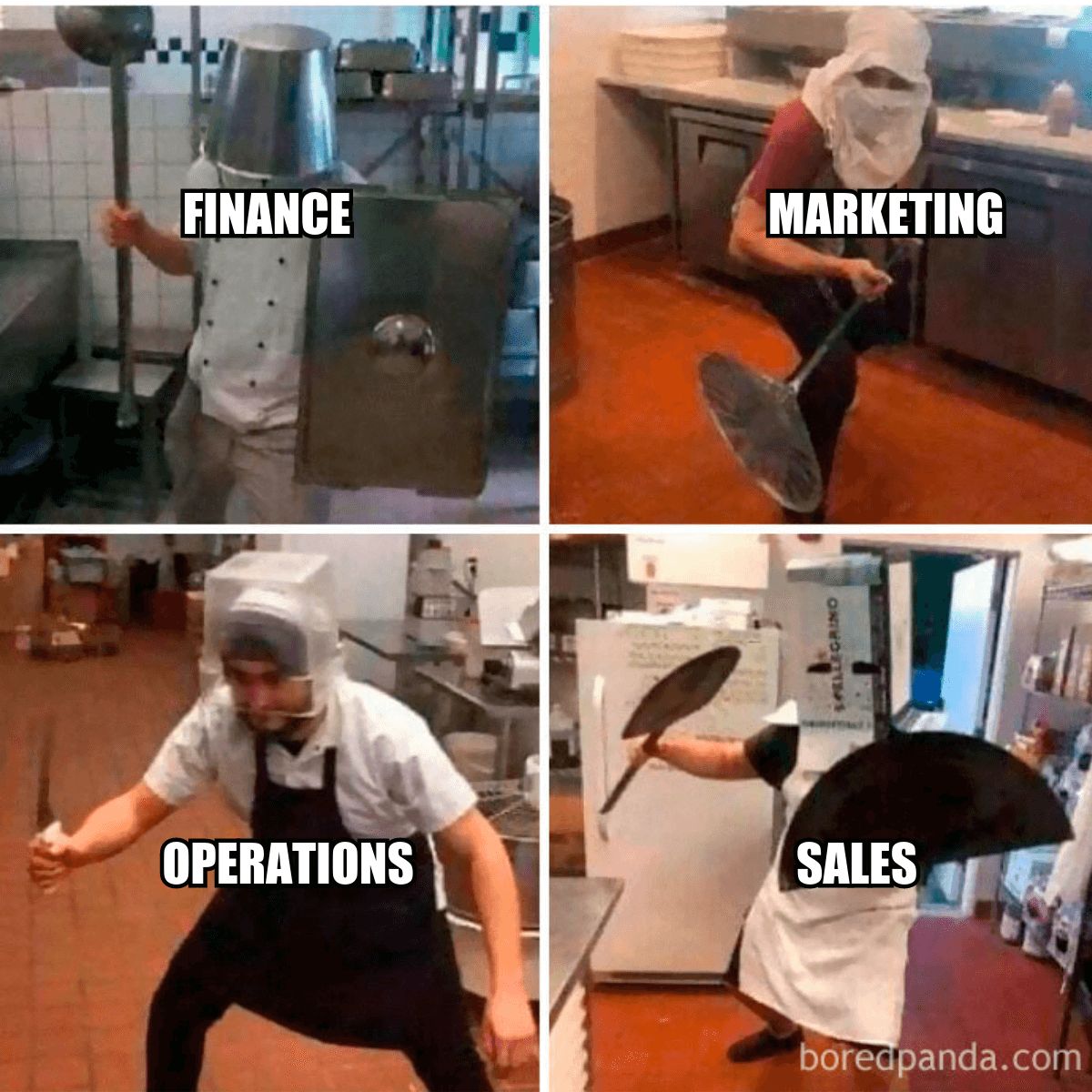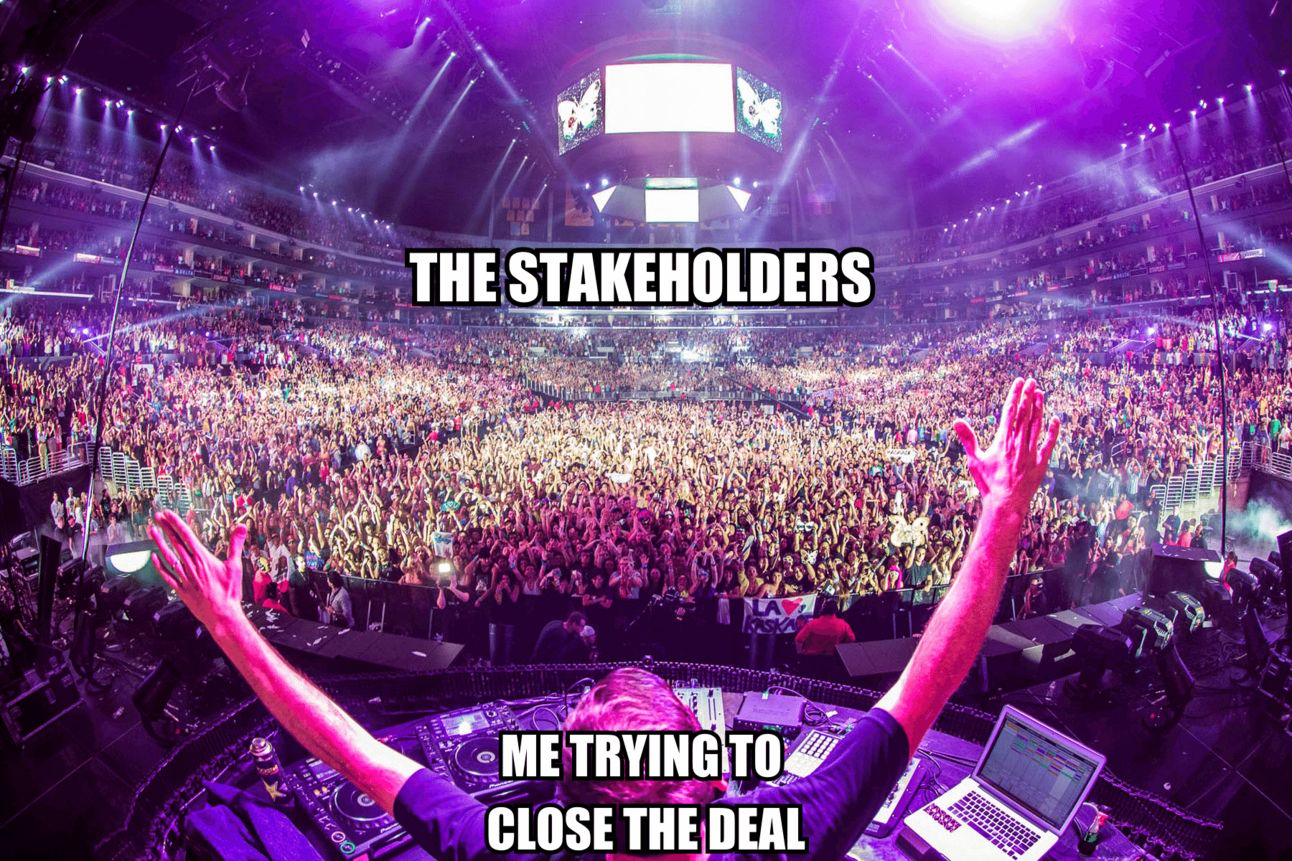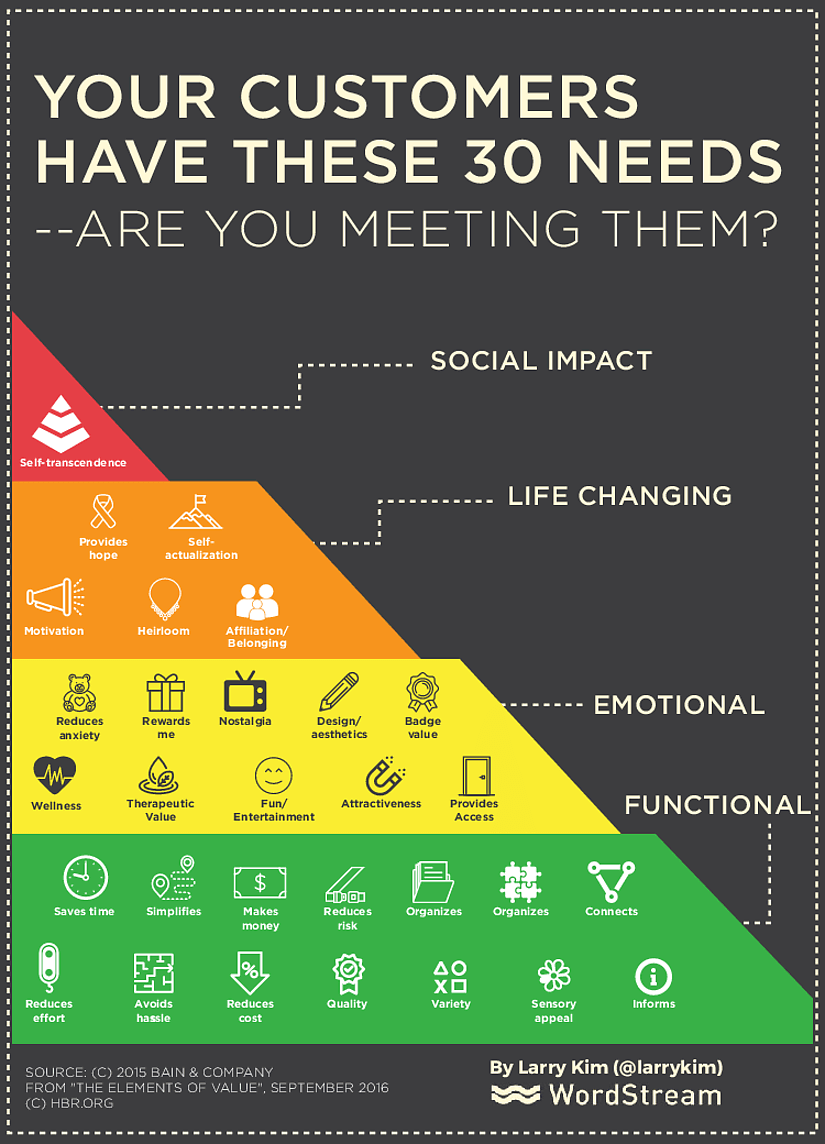Happy National Tooth Fairy Day! Now that I think about it, some customers are just like the tooth fairy. They give us money when we have something they want, but never seem to be there when we go looking. 🧚
How to deal with stakeholders🚨
Sales in the news 🗞️
Sales jobs for closers 📞
Graphic of the day 📈
Sales Fact of The Day
Personalized email messages improve click-through rates by an average of 14% and conversions by 10%
The 3 Stakeholders to Watch Out For
When there are "too many cooks in the kitchen,” it’s hard to get things done.

The same thing is true in sales.
When you’re selling to businesses, you’re selling to multiple stakeholders. Multiple stakeholders means more questions to answer, more people to please, and a more complex sale.

Think about it.
When I ask my girlfriend where she wants to eat, it takes an hour to come to a decision.
Now, try getting 10+ people to agree, and add in a corporate budget, workplace politics, and a new product they’ve never heard of before.
It gets complicated.
But in some cases, it’s unavoidable. If your product is used by multiple teams, you’re going to have multiple stakeholders.
And, out of those multiple stakeholders, you need to find your champion.
A champion is an employee at your customer's organization who is a ride-or-die for your product. They’re already sold on your product and help you sell it to the rest of their team.
But what about the stakeholders that aren’t on your side?
Here’s how to spot the 3 types of stakeholders that will kill your deals & how to deal with them:
1. The Play it Safe Stakeholder
Have you ever heard the phrase: “Nobody ever got fired for buying {insert legacy software like IBM or Cisco}”?
This phrase is about the play-it-safe stakeholder.
This stakeholder is typically new-ish in their role and afraid of making decisions that could have an effect on the future of their job.
If they agree to a new product/solution and it doesn’t work out, they fear it could get them fired.
So what do they do? They go with the legacy solution (even if it’s worse).
How to deal with them: If you can get a 1v1 meeting with this stakeholder, do it. You need to figure out what is really motivating them, and how you can tie your product to their career goals.
If their internal driver is a fear of losing their job or reputation, present your product in a way that shows how it can improve these (ex: increase performance, cut costs, etc.) and make them look good to their boss.
2. The Cheapskate
If you’re the more-expensive option on the market, you can be sure you’ll run into this one.
In their mind, the cheapest option is usually the best.
This stakeholder can be a part of the finance team or just want the notoriety of saving the company money.
It’s important to identify that price is the actual reason this stakeholder is blocking you so you can hit this objection head-on.
How to deal with them: Be direct. This isn’t a time to dance around the fact that the price is what is holding up the deal. Present your product to this stakeholder in a way that shows your product’s value far outweighs the cost.
3. Your Competitor’s Fanboy
This could be your competitor’s champion.
They may have used your competitor at a previous company, or be friends with an employee at your competitor’s company.
The key to dealing with this blocker is to identify the underlying cause.
Use LinkedIn to figure out if their previous company used your competition, and check if they’re connected to any employees at your competitor.
You’ll need to rely on your champion to figure out the real reason behind their loyalty to your competitor.
Once you understand why they’re on your competitor’s side, you can make the decision on how to handle this.
How to deal with them: If it has to do with a specific feature your competitor has, try to meet with this stakeholder individually to show them how your product can specifically help them and their team.
If this stakeholder has a personal tie to your competition, it may be best to put your energy into the other stakeholder instead of trying to change this one’s mind.
TLDR:
When it comes to the stakeholders of a deal:
Find your champion and lean on them.
Stakeholder that blocks deals often fall into 3 categories:
The play-it-safe stakeholder
The cheapskate
The competitor’s fanboy
Identify which category your stakeholder falls into, so you can hit their objections head-on.
Which is your least favorite stakeholder?
Sales Tip of The Day
When your prospect answers an important question during a sales call, try repeating their answer back, word-for-word.
You: How many hours do you think your team wastes on doing things the current way you’re doing them?
Prospect: If I had to guess, I’d say we’re probably wasting upwards of 10 or so hours every week.
You: Understood. So your team is wasting upwards of 10 hours every week on the way you’re currently doing things.
In most cases, they will feel a need to add additional information to their original answer, which gives you more context to sell with.
And if you heard something wrong, this gives them a chance to correct you.

Sales in the News
A former Apple sales exec shares the story of how he closed a huge deal with a marketing legend and learned a valuable lesson from him.
Hewlett Packard realized that deals involving sustainability concerns drove $1.3B in new contracts in 2022, and now their entire Sales team is trained on sustainability and carbon emissions.
Four steps that B2B revenue leaders should be taking to drive a better revenue strategy.
When you mess up a sales call so bad that you can’t stop laughing.
Sales Jobs for Closers
Sales Development Representative @ Oomnitza (Remote)
Strategic Account Executive @ People.ai (Remote)
Founding Account Executive @ Recall.ai (Remote)
Business Development Manager @ Travel Edge (Remote)

Graphic of The Day:
The 30 Needs of Customers 🗣

Source: Larry Kim

Sales Meme of The Day

What did you think of today's newsletter?
Want to advertise in The Follow Up? Click Here